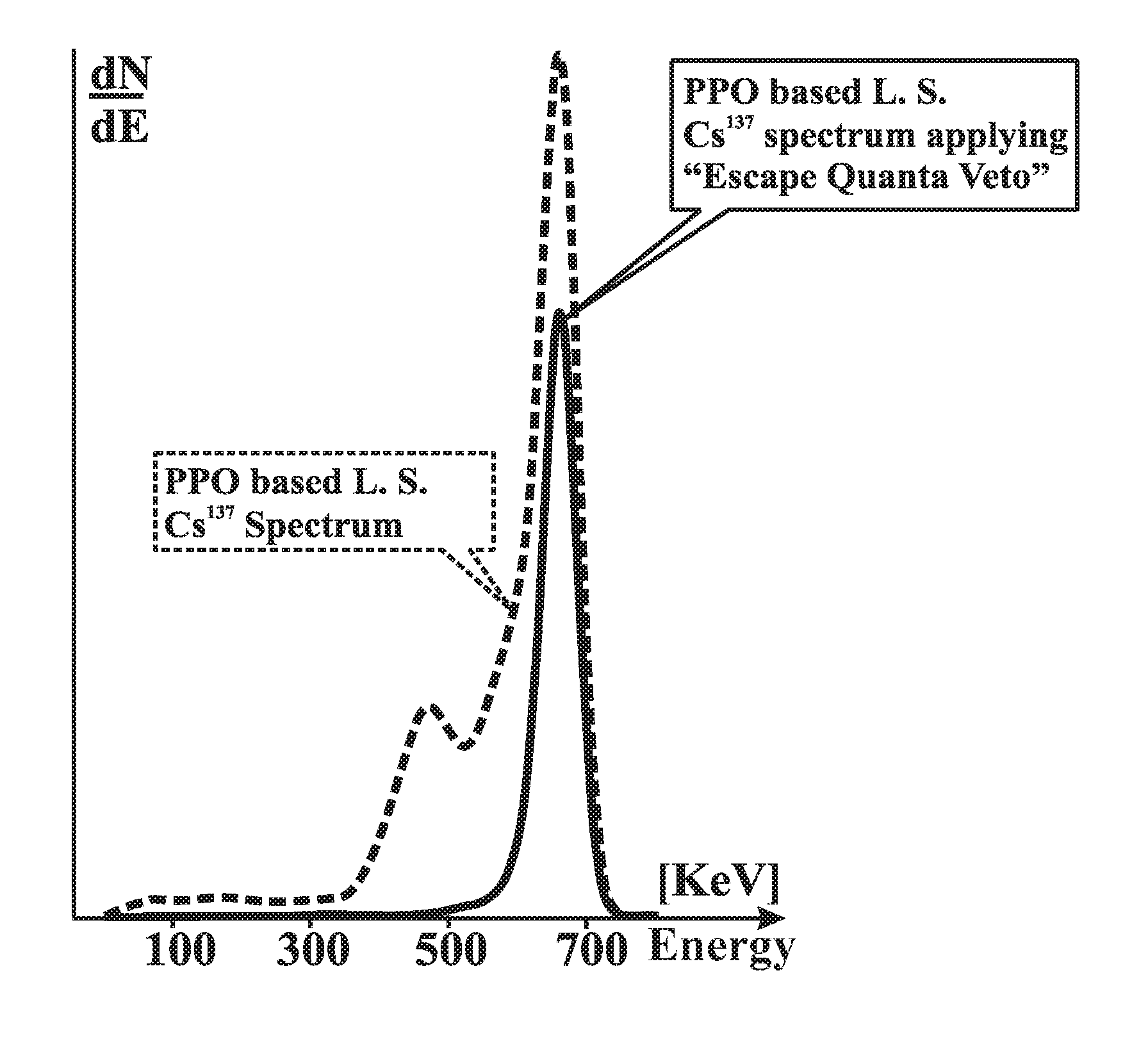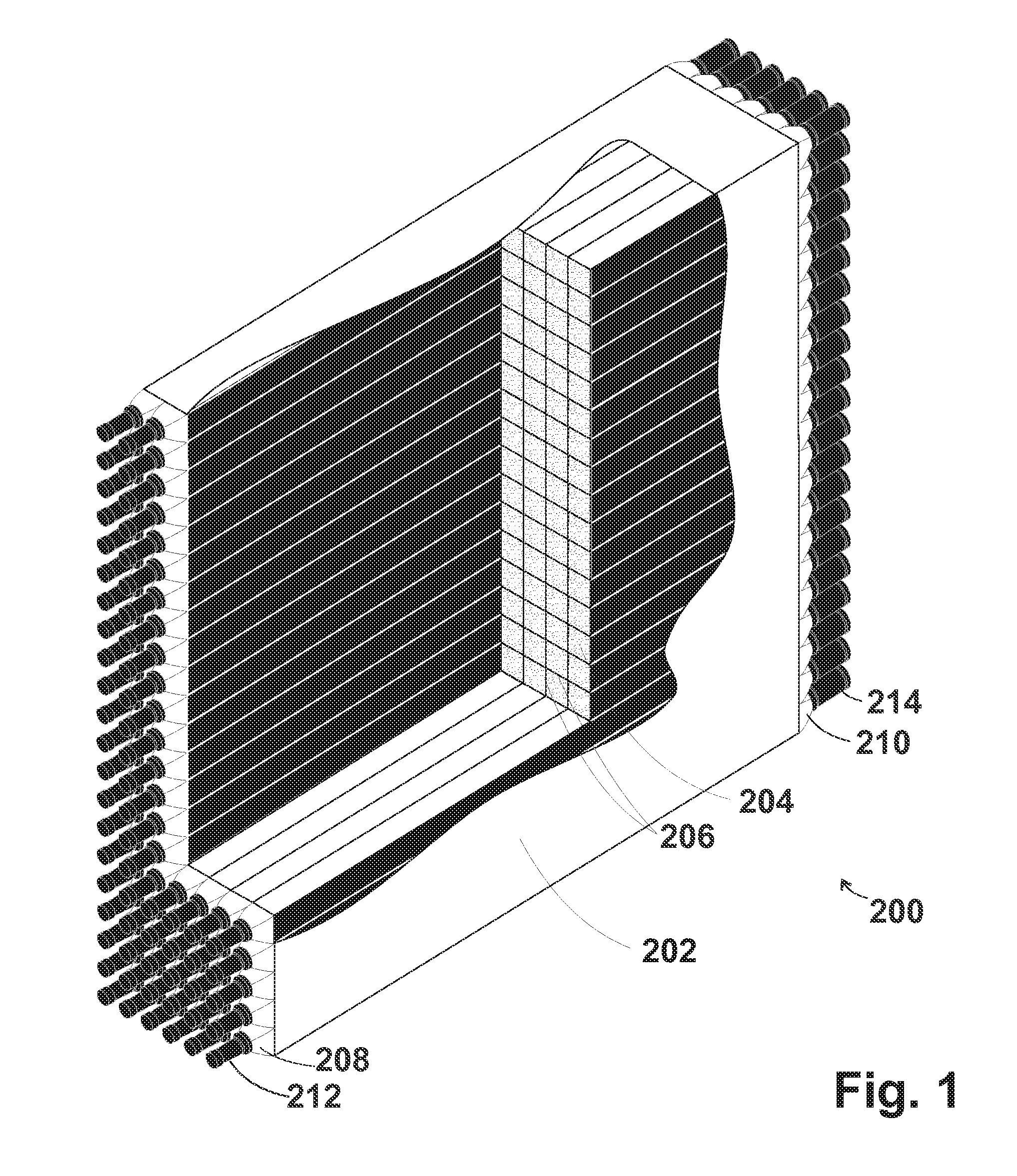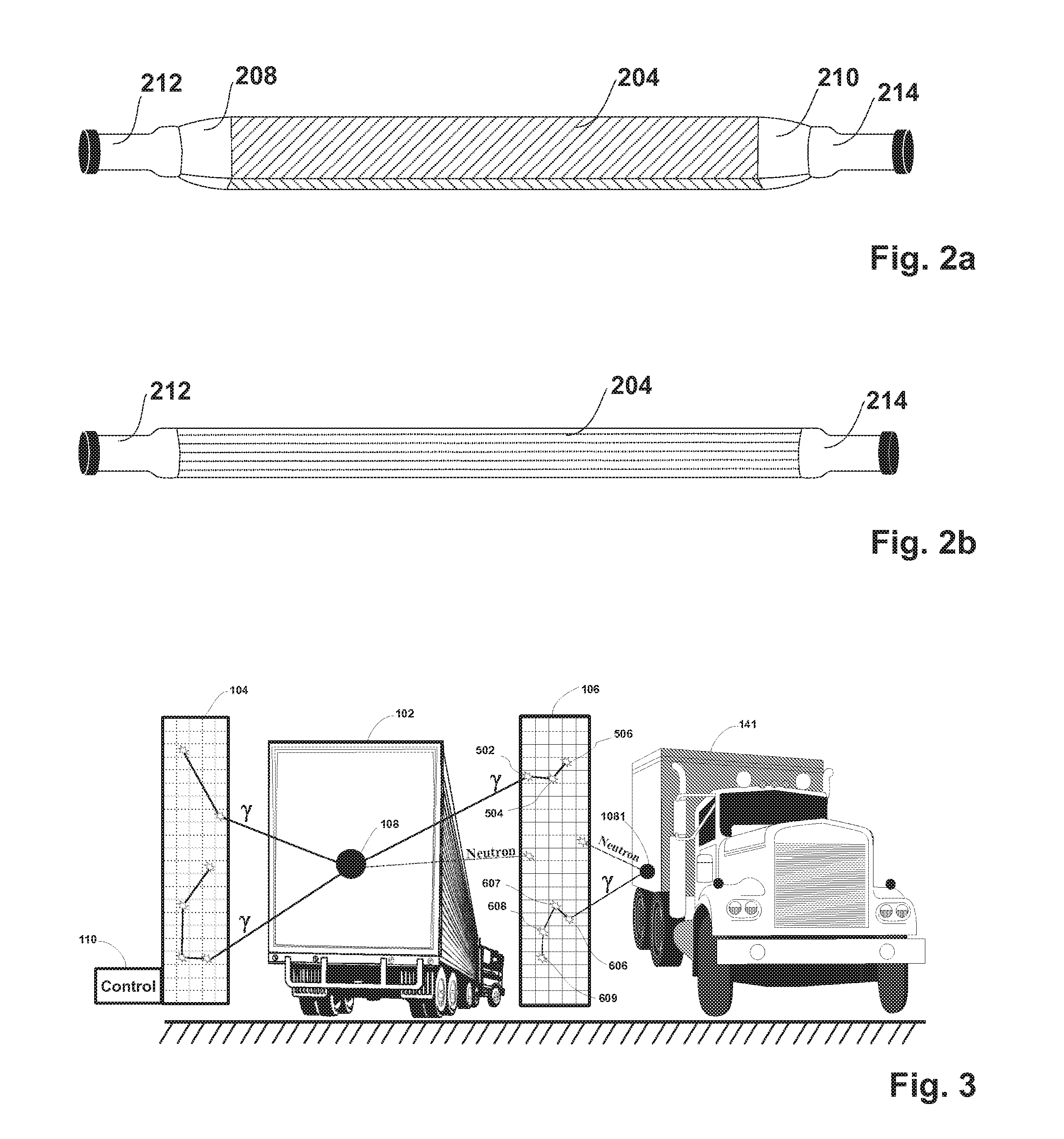Methods and Apparatus for Improved Gamma Spectra Generation
a technology of gamma spectra and gamma neutrons, applied in the field of threat detection, can solve the problems of large radiation emission of human undergoing nuclear medicine imaging or radiation treatment using implanted radioactive seeds, difficult screening in practice, and increase the reliability of threat detection of the system, so as to reduce background radiation, improve the detection effect, and improve the detection effect of signal
- Summary
- Abstract
- Description
- Claims
- Application Information
AI Technical Summary
Benefits of technology
Problems solved by technology
Method used
Image
Examples
Embodiment Construction
[0063]FIG. 1, corresponding to FIG. 3 of US Publication 2006 / 0289775, shows a partial cut-away view of a segmented detector 200 (corresponding to detectors 104 and 106 of FIG. 1 of US Publication 2006 / 0289775, in an embodiment of the invention). In the following discussion, the visible face of the detector is referred to as a front face 202 and the other face, as the rear face.
[0064] As shown in the exemplary embodiment of FIG. 1 and referring also to FIG. 2A, corresponding to FIG. 4A of US Publication 2006 / 0289775, detector 200 is segmented into elongate segments of scintillation material (one of which is referenced with reference numeral 204) by reflective partitions 206. Thus, light from a scintillation which occurs in a particular segment is reflected from the partitions and remains in the same segment. By the nature of the reflections, the light is reflected toward one or the other end of the elongate segment, where it is optionally concentrated by a light concentrator before ...
PUM
 Login to View More
Login to View More Abstract
Description
Claims
Application Information
 Login to View More
Login to View More - R&D
- Intellectual Property
- Life Sciences
- Materials
- Tech Scout
- Unparalleled Data Quality
- Higher Quality Content
- 60% Fewer Hallucinations
Browse by: Latest US Patents, China's latest patents, Technical Efficacy Thesaurus, Application Domain, Technology Topic, Popular Technical Reports.
© 2025 PatSnap. All rights reserved.Legal|Privacy policy|Modern Slavery Act Transparency Statement|Sitemap|About US| Contact US: help@patsnap.com



